| Vintage Pulp | Sep 14 2020 |

Once upon a time there was nobody hotter than Hemingway.
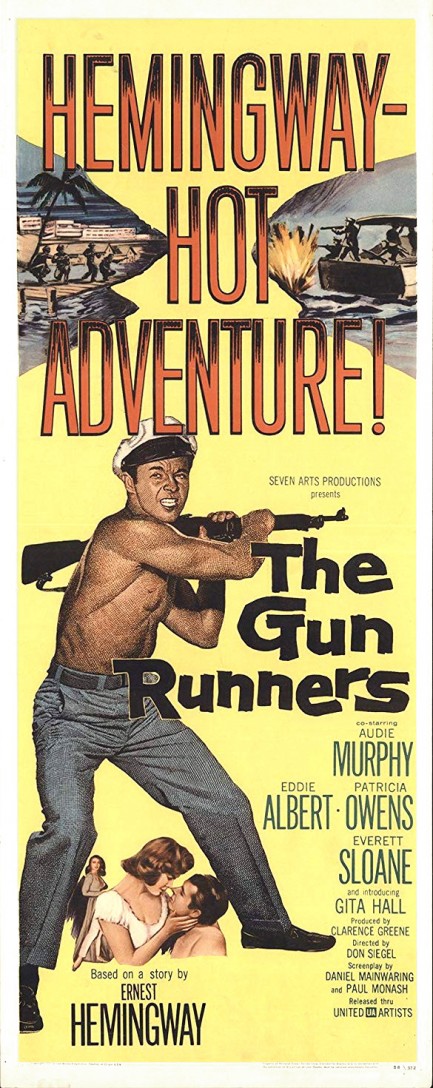
We'd heard that The Gun Runners, which premiered in Britain today in 1958, is the most faithful of the several film adaptations of Ernest Hemingway's novel To Have and Have Not. It isn't that close, actually, but it's Hemingway-hot! according to the promo poster. If we're catching the subtle inference correctly, that must mean it's good. Maybe, but what it really shows is Hemingway was so famous at this time that his mere name was a selling point. Think—how many novelists' names have you seen above the title on a movie poster in recent years? Stephen King comes to mind. Maybe Clive Barker, for a minute there. Michael Crichton? Possibly. After those three we draw a blank.
Well, we like Hemingway, and we love the Bogart/Bacall adaptation of To Have and Have Not, though it has nothing to do with the book. This Hemingway-hot! version stars Audie Murphy—yes, that one, and he's a solid enough actor—as a boat captain working out of Key West who gets ensnared in a dangerous scheme that involves smuggling weapons to Cuba. Eddie Albert as the heavy is as amoral as they come, and in supporting roles you get Patricia Owens, Gita Hall, and Everett Sloane. Sometimes the performances in old movies don't feel quite right to modern sensibilities, but you could transplant Albert's performance note for note into a new movie. Acting that stands the test of time that strongly is rare.
Another thing that stands the test of time are the themes explored here. In the novel, the item some people have that others have not is money and the freedom it brings, but in The Gun Runners what people either have or have not would appear to be scruples. It's no surprise that the structural inequality aspect of Hemingway's text was downplayed—who wanted to hear about that in 1958, when so many Americans could work a simple job yet afford a car, a house, and a family? But people sure have a clear understanding of inequality these days, don't they? For that reason alone, we think this flick will resonate with many. We recommend putting this in your queue. In the end it really is Hemingway-hot!
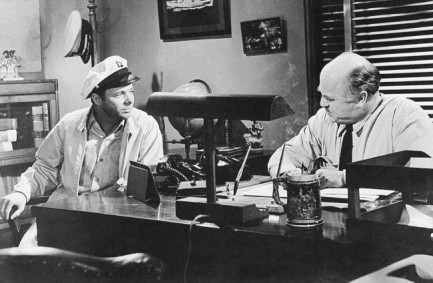
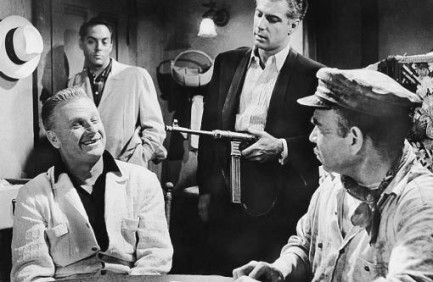
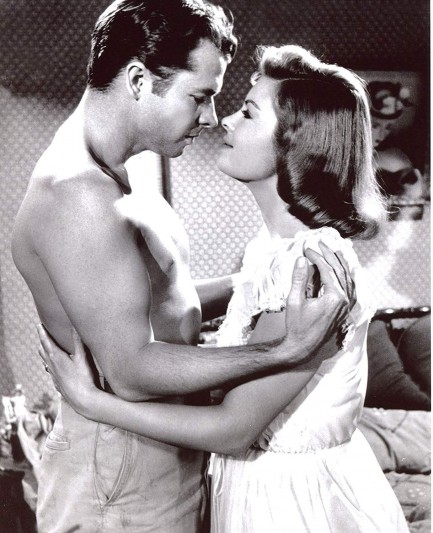
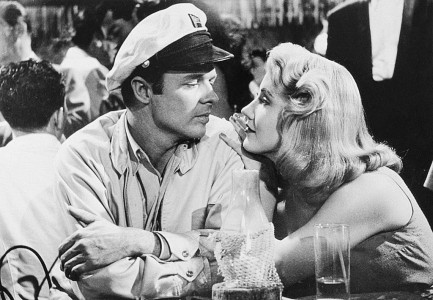

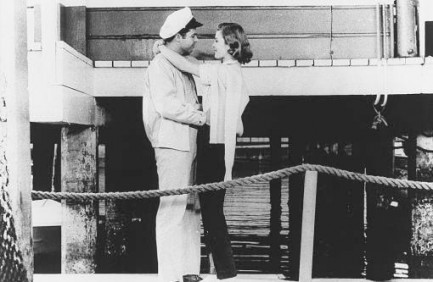
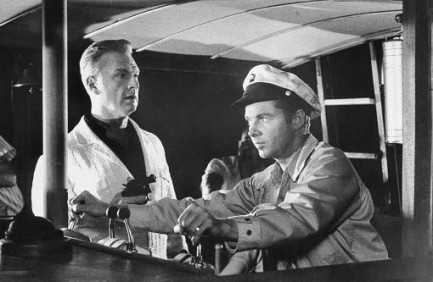
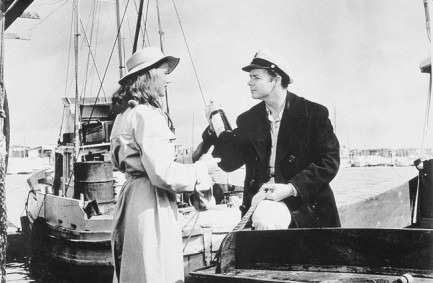
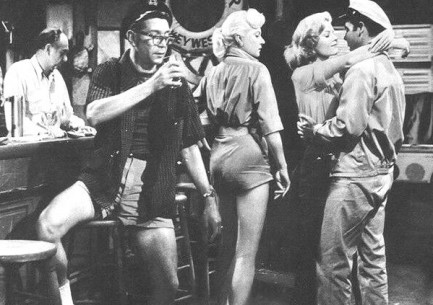
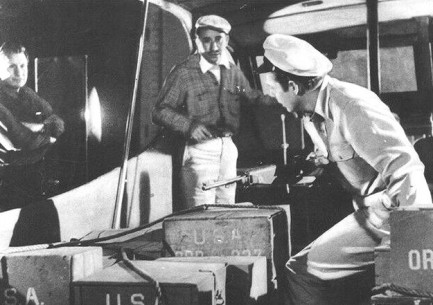
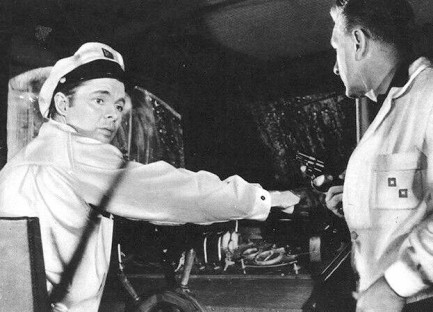
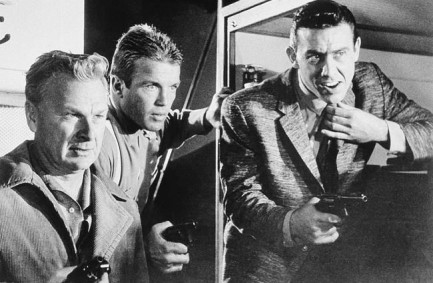
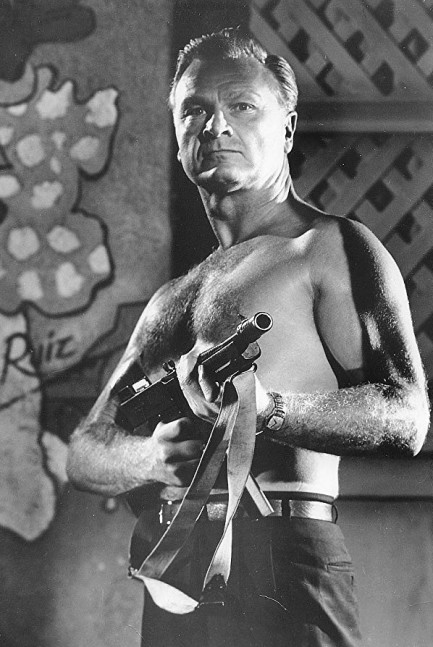
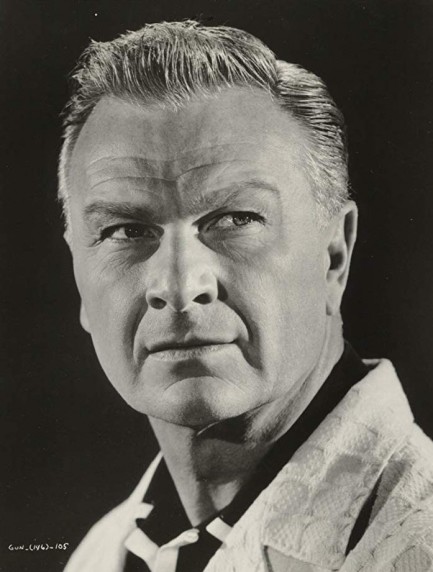
| Vintage Pulp | May 30 2019 |

Jack Finney's alien invasion novel is filled with close encounters of the worst kind.
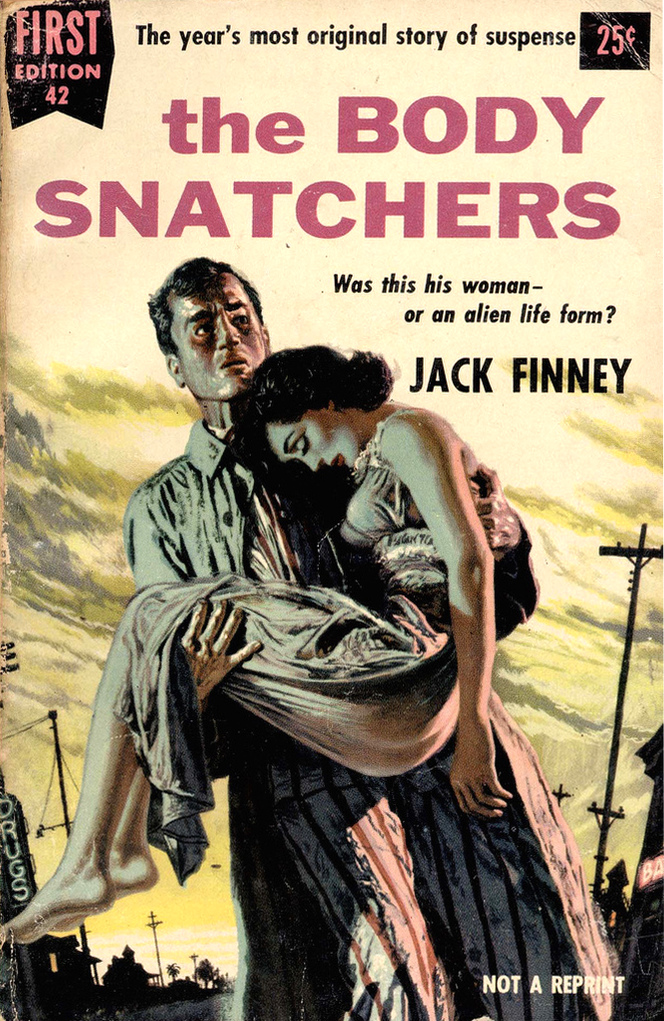
This paperback cover was painted by John McDermott, aka J.M. Ryan, and it's iconic, as is Jack Finney's novel The Body Snatchers. You know the story. Aliens come from space in the form of pods that grow into exact duplicates of humans, who are replaced and dissolved into dust. Finney deftly blends sci-fi and horror, and the result is great—simply put. As with many macabre tales, the fear factor subsides somewhat once the monsters move from the shadows to center stage, but it's still very good even after that point.
The Body Snatchers became a movie in 1956, 1978, 1993, and 2007. The ’56 Don Siegel version is famously considered by many to be a direct Cold War allegory, and is the best of the quartet of adaptations, but the ’78 iteration is damned good too. In terms of metaphor, the book seems to be less about the Cold War and more clearly about the overall loss of freedom in American society. Other than the freedom to buy things that process continues to accelerate. Finney claims the book is just popular entertainment, so we'll take him at his word, but he wouldn't be the first writer to unwittingly let subtext sneak into his work.
The Body Snatchers became a movie in 1956, 1978, 1993, and 2007. The ’56 Don Siegel version is famously considered by many to be a direct Cold War allegory, and is the best of the quartet of adaptations, but the ’78 iteration is damned good too. In terms of metaphor, the book seems to be less about the Cold War and more clearly about the overall loss of freedom in American society. Other than the freedom to buy things that process continues to accelerate. Finney claims the book is just popular entertainment, so we'll take him at his word, but he wouldn't be the first writer to unwittingly let subtext sneak into his work.
The novel originally appeared in 1955 as a serial in Colliers Magazine, with this Dell edition coming the same year. The cover artist McDermott is someone we've featured before, and if you're curious you can see more of his nice work here and here. Some book dealers actually try to sell this edition for $100, if you can believe that. Money snatchers is more like it. Buy a cheap new edition, read it, and enjoy it.




































































